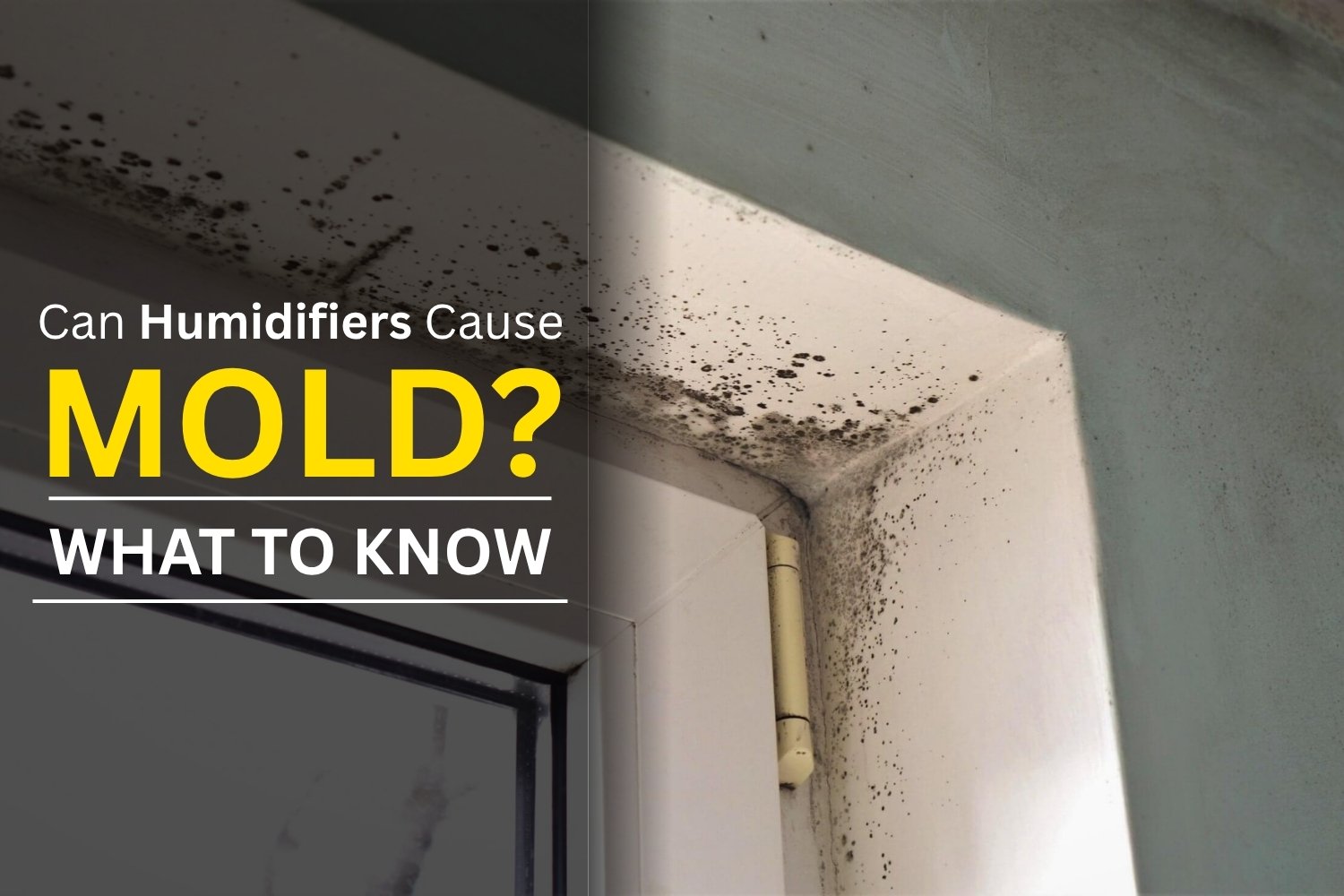
Moisture in the air offers relief during dry seasons, but it can also raise concerns. One common question many homeowners ask is, can humidifiers cause mold? It seems harmless to add moisture into dry air, especially during winter, but there is a flip side. The answer depends on how a person uses the device and the surrounding environment. Excess moisture in enclosed spaces creates ideal conditions for mold to thrive.
Here, we will discuss whether a humidifier causes mold, what signs to look for, and how to prevent unwanted growth.
Why People Use Humidifiers in Homes
Dry air causes discomfort. Skin cracks, lips chap, and sinuses dry up. A humidifier restores balance. It releases moisture into the air, helping the body feel better. Parents use it in nurseries. Seniors rely on it during cold months. Many use humidifiers to reduce allergy symptoms and improve sleep quality. Some even place them near houseplants or wooden furniture to keep them from drying out. But while it helps, overuse causes problems.
Too much moisture does not go unnoticed. Walls begin to sweat. Windows fog up. These signs show air saturation. When left unmanaged, it leads to mold development.
What is the Link Between Humidifiers and Mold
Mold develops in damp environments. When a humidifier runs too often or too long, it creates the perfect setting for spores to settle and grow. The issue becomes worse in poorly ventilated rooms. Bathrooms, bedrooms, and basements become targets.
Do humidifiers cause mold directly? Not exactly. The humidifier itself does not create mold. It produces moisture. If that moisture lingers, mold shows up. Therefore, humidifiers and mold have a strong link, especially when humidity levels exceed 60 percent.
How Mold Grows From Humidifiers
When a person asks, Can a humidifier cause mold?, they usually refer to two types of mold problems. First, visible mold on walls, windows, or furniture due to over-humidification. Second, mold inside the humidifier.
A moldy humidifier turns into a health hazard. Water tanks that remain unclean grow bacteria and fungi. These then release into the air through mist. Inhaling these particles leads to respiratory problems. People with asthma or weak immune systems suffer the most.
How to Spot Mold From a Humidifier
The nose often gives the first warning. A damp, musty odor signals mold growth. Walls begin to show black or greenish patches. Wooden surfaces swell or change color. These are red flags.
In the case of mold in a humidifier, it often starts in the water tank. Slime forms along the walls of the reservoir. Mold floats on water. Dusty mist exits the nozzle. These signs mean the unit needs cleaning.
Effects of Mold from Humidifiers on Health
Breathing in mold spores affects health. This applies especially to children, the elderly, and people with breathing conditions. Mold exposure leads to coughing, sneezing, eye irritation, skin rashes, and fatigue. Over time, it leads to serious respiratory issues.
When someone uses a moldy humidifier, the spores spread throughout the room. These spores settle on surfaces. They land on bedding, clothes, and skin. Air quality drops. The home feels stuffy and smells unpleasant. Prolonged exposure leads to chronic issues.
How to Prevent Mold Growth From Humidifiers
People ask, will a humidifier cause mold? The answer lies in the way the user maintains it. Simple habits stop mold before it starts.
First, clean the unit daily. Empty and wipe the tank. Once a week, use white vinegar to remove buildup. This step kills bacteria and prevents spores. Second, use distilled water. Tap water contains minerals that feed bacteria. Third, monitor humidity levels. A hygrometer shows the percentage in real time. The ideal indoor range stays between 30 and 50 percent.
Also, never run the humidifier for the entire day. Use it in short intervals. Allow the room to breathe. Open windows occasionally. Good airflow breaks moisture buildup. All these methods reduce the risk of mold.
Best Practices for Safe Humidifier Use
To make sure humidifier and mold do not go hand in hand, keep a routine. Replace filters often. Some models have built-in cleaning cycles. Follow manufacturer instructions. Do not let water stand in the tank for more than a day. Dry the inside fully between uses.
Keep furniture and walls at a safe distance. Direct the mist away from surfaces. Also, place the unit on a raised surface. This helps air circulate better. Rooms with carpet trap more moisture, so use caution. These practices protect both health and home.
Choose the Right Type of Humidifier
Not all units perform the same. Cool mist, warm mist, ultrasonic, and evaporative models offer different features. Each has pros and cons. For example, warm mist units kill more germs but increase room temperature. Ultrasonic models use vibrations. These often produce white dust unless paired with distilled water.
If a person keeps asking, Do humidifiers cause mold?, it may help to choose a self-regulating model. Some have built-in humidistats. These devices shut off when moisture levels reach safe limits. Smart units connect to apps for better control.
Mold Prevention in the Whole Home
Even if the humidifier runs perfectly, other home factors play a role. Leaky windows, clogged vents, and roof damage also cause moisture. A home needs proper insulation and airflow. Seal gaps, fix leaks, and clean air ducts regularly. This makes the indoor climate balanced.
Bedrooms, kitchens, and bathrooms need special care. Avoid placing humidifiers near windows. Glass gets cold and forms condensation. Mold loves this. Keep drapes open to allow airflow. Dry towels, clothes, and rugs promptly.
Signs That Mold Already Exists
Sometimes mold hides. It grows behind walls or under carpets. Watch for persistent allergies. If sneezing or itchy eyes return often, inspect the area. Strange odors point to hidden growth. Use a flashlight to inspect corners. Look behind furniture. Mold leaves stains and dust trails.
If unsure, a mold test kit helps. These kits detect spores in the air. But for thorough checks, professional services work best. They identify mold sources and provide long-term solutions.
Humidifier Use for Children and Seniors
Children and the elderly benefit from humidifiers. Their skin and lungs react more quickly to dry air. But they also suffer more from mold. Parents must clean units more often in nurseries. Caregivers must monitor units in senior living areas. Avoid placing the device too close to beds. Also, check humidity every day.
Can a humidifier cause mold in children’s rooms? Yes, if left unchecked. Simple cleaning keeps them safe.
The Difference Between Dirt and Mold in Humidifiers
Not all buildup is mold. Sometimes white or brown spots come from hard water. These minerals dry along the tank walls. Mold feels slimy or fuzzy. It smells musty. To confirm, wipe the spot. Mold smears and leaves residue. Minerals feel chalky. This small test helps determine the next steps.
If unsure, replace the unit. Small units cost less than hospital visits. Health must always come first. When in doubt, turn to professionals like 360Comfort. Our service guarantees each humidifier works safely and efficiently. Mold prevention starts with awareness. It ends with action.
